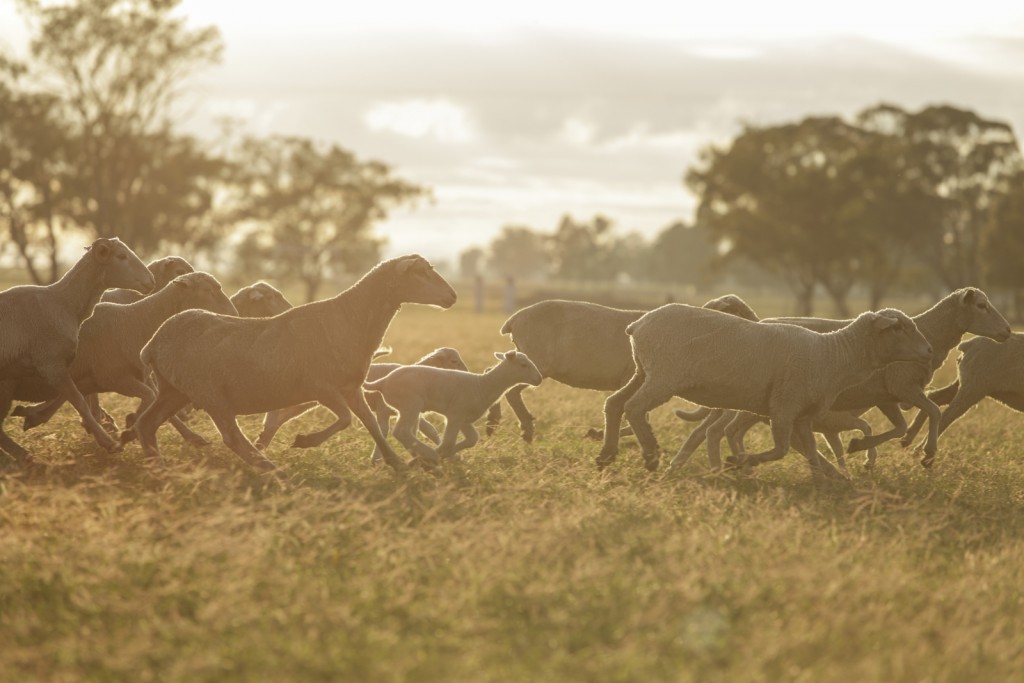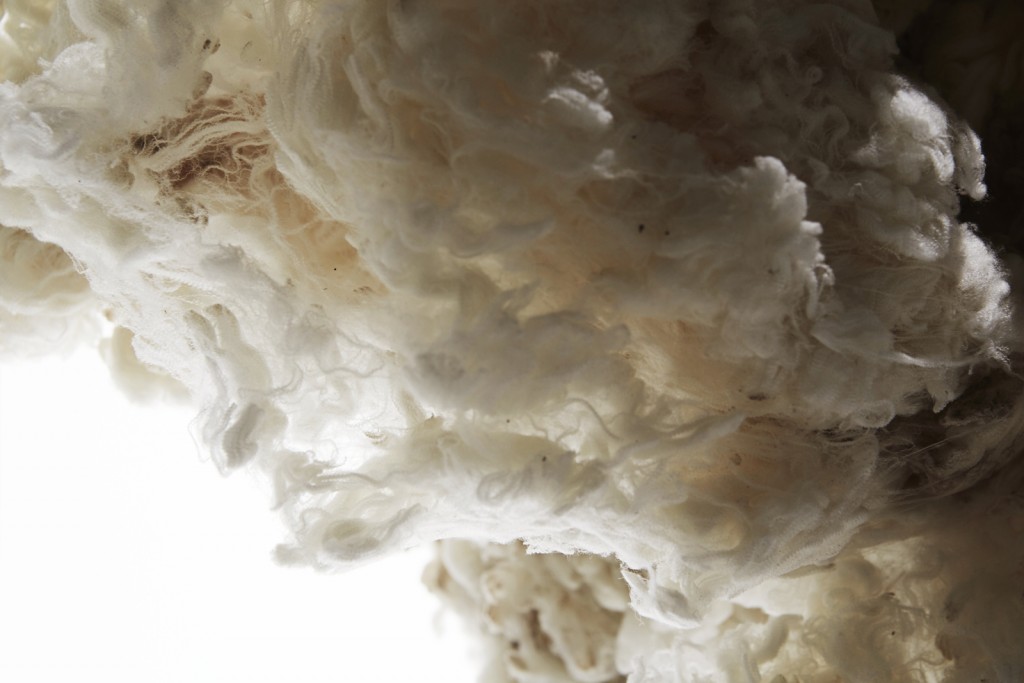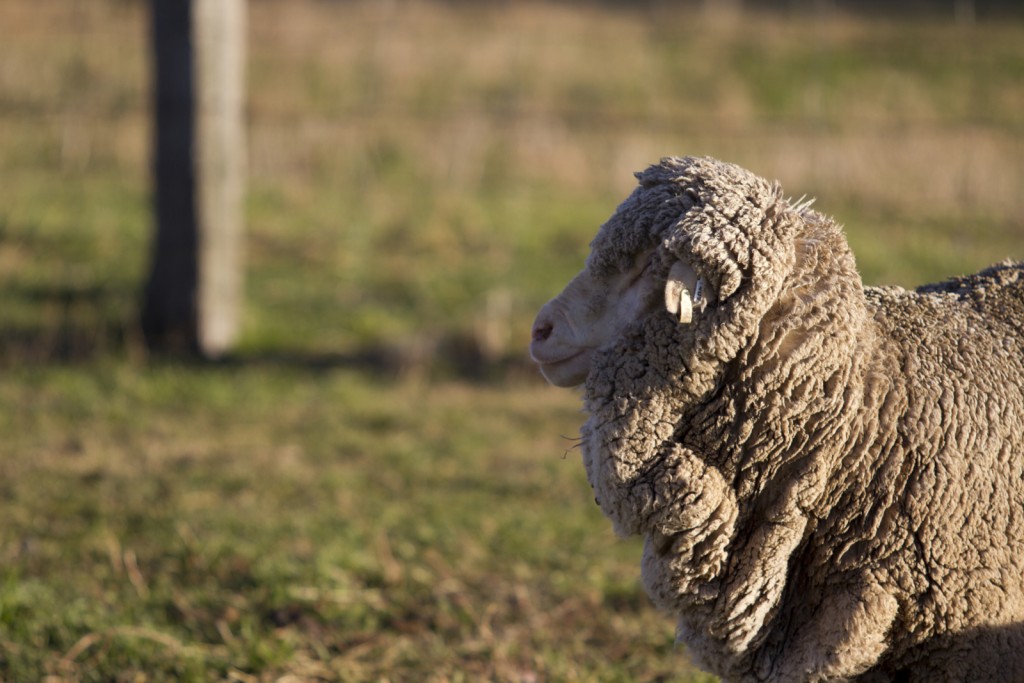
Finely tailored wool clothing has been a standard of quality for centuries. Fabric made from quality wool fibers is soft, light, and durable. It has fantastic drape and elasticity. Wool has amazing insulating properties; it will keep you warm even if it gets wet, but if it is scorching out, it will also keep that excess heat away from you. It is a joy to work with and a comfort to wear.
Where Does Wool Come From?
Wool begins as the coat of a sheep (though some other animals' coats are also called wool). Breeders have developed varieties of sheep that are focused on producing long, fine fibers that are unbelievably soft. The variety most often used for clothing is Merino; fibers from a Merino fleece can be soft enough for baby clothes. Shetland, Corriedale, Romney, and Leicester are also used for clothing. Although most countries have at least some wool production, the majority of the clothing-quality wool comes from Australia, with China and New Zealand next in line.
The individual fibers in a fleece have a unique structure, with many tiny scales along the length of a fiber that contains fine crimps. When they touch, these scales tend to stick together, which means that the fibers will join firmly when they are twisted. This is how 3-6" long fibers can be twisted together into yarn hundreds of yards long.

How Does Wool Go From Sheep to Fabric?
In the spring, the sheep are brought in, their coats are sheared, and the fleece is processed. First, it is graded - the fleeces are broken up and divided according to quality. Different sections are of different qualities. The finest fiber from the shoulders and sides is used to make clothing. Lower quality fiber from the legs and belly is used to make blankets and rugs.
The next step is to clean the wool. This serves two purposes; the first is to remove dirt and debris that the sheep picked up while the fleece was growing, and the second is to remove the lanolin, which is a heavy oil that coats raw fleece. This makes the fleece water resistant, but lanolin is smelly and greasy. Often the lanolin is saved and processed further into cosmetics, soap, and skin creams.
Then the wool is carded and combed. This process lines all the fibers up in the same direction. This forms it into something called roving or wool top and prepares it for the spinning process.
During spinning, the wool is twisted into yarns of varying thicknesses. Different thicknesses of yarn make different weights of fabric.
To make woven fabric, the yarn is threaded into a loom. The warp threads are those lined up parallel in the loom, and the weft threads are the yarn that is manipulated between the warp threads to make fabric. Patterns can be made in the fabric by changing the order in which warp and weft interact or by using different colors while weaving.
Different processes can be used after the fabric is woven to give different finished effects to the fabric.

How Do You Tell Quality of Wool Fabric?
Wool fabric is given a number called the super count - S number - which identifies the fineness of the fiber used to make that fabric. The higher the number, the finer the fibers used to make the fabric. For instance, 80s are 19.75 micrometers or less; 210 is 13.25 micrometers or less. Finer fibers can be softer, but the fabric tends to be more fragile and may wear out quickly.
Super S originally meant highest quality wool; currently, it is used to mean pure, new wool. It can even mean the standard sheep's wool is blended with rarer types of wool such as alpaca or cashmere. It is not allowed to be used for wool blends with other kinds of materials.
Fabric also has weight. The weight of a fabric refers to how much a given amount weighs, and will be influenced by how thick the yarn was from which it was made, how firmly or loosely it was woven, and how it was processed. For wool, the amount weight is one yard. Thick winter fabrics may be 16-20 ounces a yard; lightweight warm weather fabric could be 6-8 ounces. Average suit fabrics will most likely be 10-12 ounces. You choose the weight that best suits your purpose.
Treatments for Wool Fabric
There are different ways to treat wool to make is suitable for different purposes. For instance, superwash wool has been treated so that it will not felt when washed. There is ongoing research into ways to make wool less likely to wrinkle (the dark side of how well it holds its shape).
Other treatments change the way that wool reacts to water. Wool naturally has mild water-repelling qualities. One substance recently developed, when used to treat a wool garment, will encourage the wool to soak up moisture from sweat and send it to the outside where it will evaporate; its inventor hopes this will make wool exercise gear practical.
Other ways to treat wool focus on doing the opposite, and making the wool waterproof. These may include treating the wool with a chemical or including a water-resistant thread in the yarn when it is spun. The most common way to waterproof wool is to reintroduce some refined lanolin to the wool by dissolving a small amount into water and using that to soak the fabric.

An Essential Part of Every Mans Wardrobe
Wool is a highly versatile fiber, used in every kind of clothing. Good quality wool clothing is warm, water-resistant, soft, durable, and beautiful. A good quality, well-fitted wool garment is an essential for every wardrobe.

